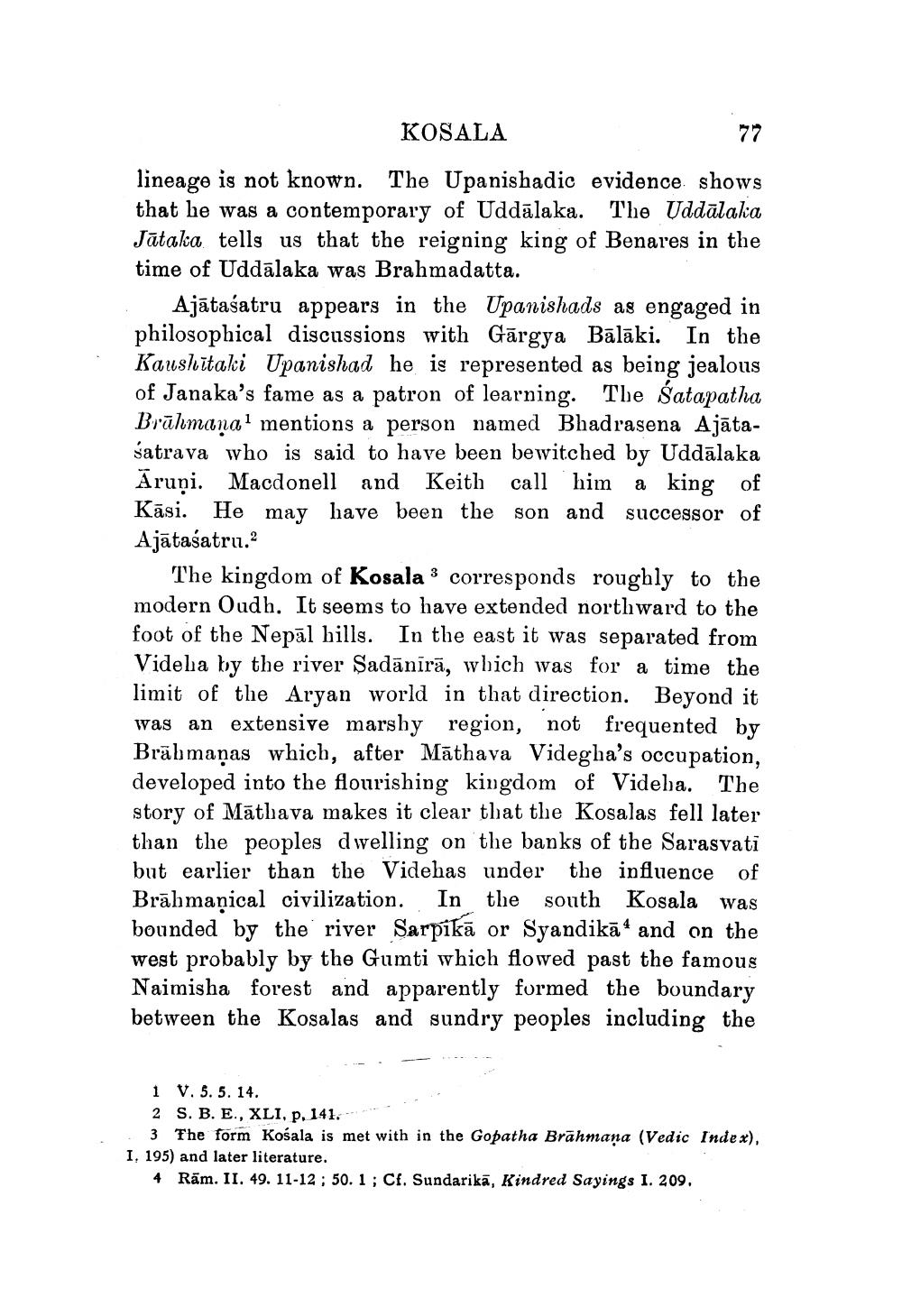________________
KOSALA
77
lineage is not known. The Upanishadic evidence shows that he was a contemporary of Uddālaka. The Uddālala Jātaka tells us that the reigning king of Benares in the time of Uddalaka was Brahmadatta.
Ajātasatru appears in the Upanishads as engaged in philosophical discussions with Gārgya Bālāki. In the Kaushitaki Upanishad he is represented as being jealous of Janaka’s fame as a patron of learning. The Satapatha Brāhmana? mentions a person named Bhadrasena Ajātasatrava who is said to have been bewitched by Uddālaka Āruņi. Macdonell and Keith call him a king of Kāsi. He may have been the son and successor of Ajātaśatru.
The kingdom of Kosala 3 corresponds roughly to the modern Oudh. It seems to have extended northward to the foot of the Nepāl hills. In the east it was separated from Videla by the river Şadānīrā, which was for a time the limit of the Aryan world in that direction. Beyond it was an extensive marshy region, not frequented by Bräb maņas which, after Māthava Videgha's occupation, developed into the flourishing kingdom of Videha. The story of Māthava makes it clear that the Kosalas fell later than the peoples dwelling on the banks of the Sarasvati but earlier than the Videhas under the influence of Brāhmaṇical civilization. In the south Kosala was bounded by the river Sarpíkā or Syandikā4 and on the west probably by the Gumti which flowed past the famous Naimisha forest and apparently formed the boundary between the Kosalas and sundry peoples including the
1 V. 5. 5. 14. 2 S. B. E., XLI, p. 141. **
3 The form Kośala is met with in the Gopatha Brāhmana (Vedic Index), I, 195) and later literature.
4 Rām. II. 49. 11-12 ; 50.1 ; Cf. Sundarikā, Kindred Sayings I. 209.




